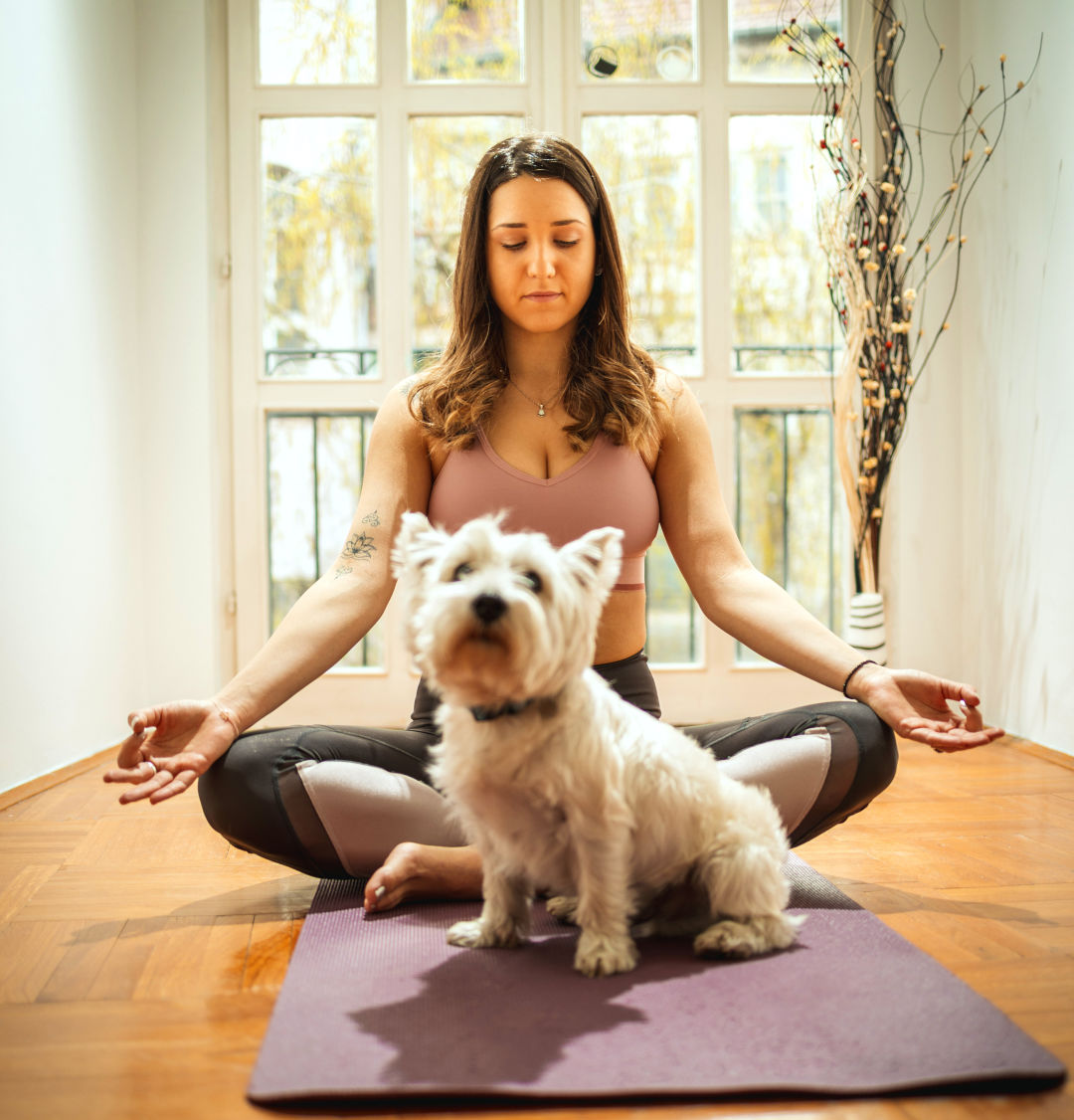How to Meditate at Home—And Incorporate Your Pets

Meditation is a little like going to the gym: you almost never look forward to it but you also never regret it afterward. Unlike going to the gym, meditation has two clear advantages: there’s no equipment to worry about (a comfortable sitting pillow is probably the biggest splurge you can make) and you don’t ever need to leave your house to do it.
“Taking care of our mental health right now is so critical. It’s so easy to take care of everything else, because it feels more tangible and safe,” says Rena Satre Meloy of Portland-based Pause Meditation. “Our mind is the foundation for everything we experience. Especially with handling fear—it’s one of those things that can overwhelm our nervous systems—meditation is the best tool I know.”
Satre Meloy says that Pause, which uses secular, modern interpretations of Buddhist meditation techniques, has moved its slate of class offerings from downtown studio to online video sessions, and seen an uptick in signups as a result, not just in Portland but nationally. The five-year-old studio offers guided meditation classes, with expert instruction from instructors, but that personal connection isn't necessary to get started. Apps like Headspace or Calm have pre-recorded sessions that are very effective and there’s also any number of free YouTube meditation videos with guided experiences targeting deep sleep, anxiety, and settling fears.
“When we no longer have control over our external circumstances—most of us have some semblance of control in our normal lives—when we lose that sense of control or certainty, that’s the space where a lot of the anxiety or fear shows up,” she says. “What’s so powerful about meditation, we can tap into our own resources and we can choose how to respond.”
We asked Satre Meloy how best to get started.
Pick a schedule and stick to it. Set a dedicated time each day for your meditation practice. “Everyone knows meditation is good for them, but putting your butt on the chair or in the cushion is surprisingly hard,” says Satre Meloy. “There’s a level of accountability if you have to show up to online app.”
No matter how small your home, carve out a space. A space for meditation doesn’t need to be big, it just needs to have been created with intention. Whether you have an extra bedroom, or just an empty corner of a studio apartment, dedicate that space to meditation.
“Ideally if you have a separate room, or even a corner of a room, it helps with training a habit to say, ‘Here I am.’ Kind of like if you go to sleep—you go to bed—it can help welcome that meditative state. But even if all you have is a wider desk—one side is working, the other side is where your practice happens, that can really help.”
And if you live with someone, just communicate clearly about what you’re doing and ask for their support.
Use an object to help you focus. Choose some small physical object—it could be a book, or a photograph, or a quote on a Sticky note—to put in your meditation space and help you focus. Over time, it will help you come to a meditative zone quicker.
“My own example is that I have a candle—a small tea light candle that’s in the corner of our bedroom—and a meditation cushion there. We also have a merged home office/meditation space, so there’s not a physical separation. But my cushion and candle are there and it helps me dial in. That could be any object for someone.
Your pets won’t leave you alone, so incorporate them. Use it as an anchor of your experience—if your cat curls up in your lap—an anchor is anything that’s unfolding in the present moment. If you have a pet, you can just anchor with your sensations. You can literally use sound as your anchor. Relaxing and listening to the sounds your pet is making. You can use that “distraction” to help train your mind. If you’re meditating, and something is pulling your mind away. Dog, cat… make a mental note. A huge part of meditation is noticing when you’re distracted and coming back. Mental resilience is developed through that practice.
Want to find out more about the theory behind what you're doing? Try one of these books.
Living Beautifully with Uncertainty and Change by Pema Chödrön (Tibetan Buddhist)
Wherever You Go, There You Are by Jon Kabat-Zinn, founder of Mindfulness-Based Stress Reduction program (secular)
10% Happier by Dan Harris (secular)




